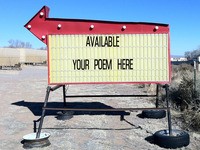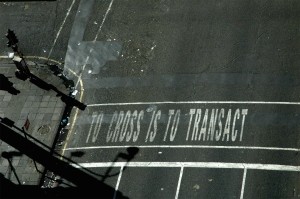 It’s been a very warm, dry April in Santa Fe. But May has started windy and cold — it’s snowing as I type this and tonight there’s a freeze warning. The sort of Sunday when I’m inclined, after my morning coffee, to go back to bed with the crossword puzzle, the paper and a good book.
It’s been a very warm, dry April in Santa Fe. But May has started windy and cold — it’s snowing as I type this and tonight there’s a freeze warning. The sort of Sunday when I’m inclined, after my morning coffee, to go back to bed with the crossword puzzle, the paper and a good book.
![]() Last year, our first in New Mexico, I ignored our yard, as we were too busy renovating the inside of our house. But now that we’re mostly done, I have no excuse. I’m not much of a gardener, but I really have to do something about the large patch of dirt next to the front door, and the bushes and trees are crying out for pruning. So I’ve spent the last week identifying what we have and how to take care of each one. The web and local nursery have been helpful, but I finally had to admit that my 1980 version of the Sunset Western Garden Book was woefully out of date. So instead of spending the entire day in bed, I walked over to a local bookstore (Collected Works) to see if they had a newer copy. I’ve been there several times for poetry readings, and as luck would have it I serendipitously timed my visit for a reading: “A May Day Celebration featuring Poems on Flowers, Trees, Birds, Bees, and Crawling Creatures.”
Last year, our first in New Mexico, I ignored our yard, as we were too busy renovating the inside of our house. But now that we’re mostly done, I have no excuse. I’m not much of a gardener, but I really have to do something about the large patch of dirt next to the front door, and the bushes and trees are crying out for pruning. So I’ve spent the last week identifying what we have and how to take care of each one. The web and local nursery have been helpful, but I finally had to admit that my 1980 version of the Sunset Western Garden Book was woefully out of date. So instead of spending the entire day in bed, I walked over to a local bookstore (Collected Works) to see if they had a newer copy. I’ve been there several times for poetry readings, and as luck would have it I serendipitously timed my visit for a reading: “A May Day Celebration featuring Poems on Flowers, Trees, Birds, Bees, and Crawling Creatures.”
![]() As I was paying for the garden guide, I saw a postcard with the picture above, a website address and the title “Haiku Roadsign Project”. Looking it up when I arrived home, I found a kickstarter project for a group here in Santa Fe
As I was paying for the garden guide, I saw a postcard with the picture above, a website address and the title “Haiku Roadsign Project”. Looking it up when I arrived home, I found a kickstarter project for a group here in Santa Fe
We found a charming old roadside sign in need of a new purpose… (Our) project is to buy the sign and curate a series of Haiku Poetry. We will present 2 new poems (one on each side of the sign) each week for four months during the summer of 2011. Automobile passengers, bike riders, and pedestrians will enjoy poetry in consistently unexpected places throughout Santa Fe.
Pretty cool, I think. And despite the cold, made for a very nice end to the week, and an even better end to National Poetry Month.




















